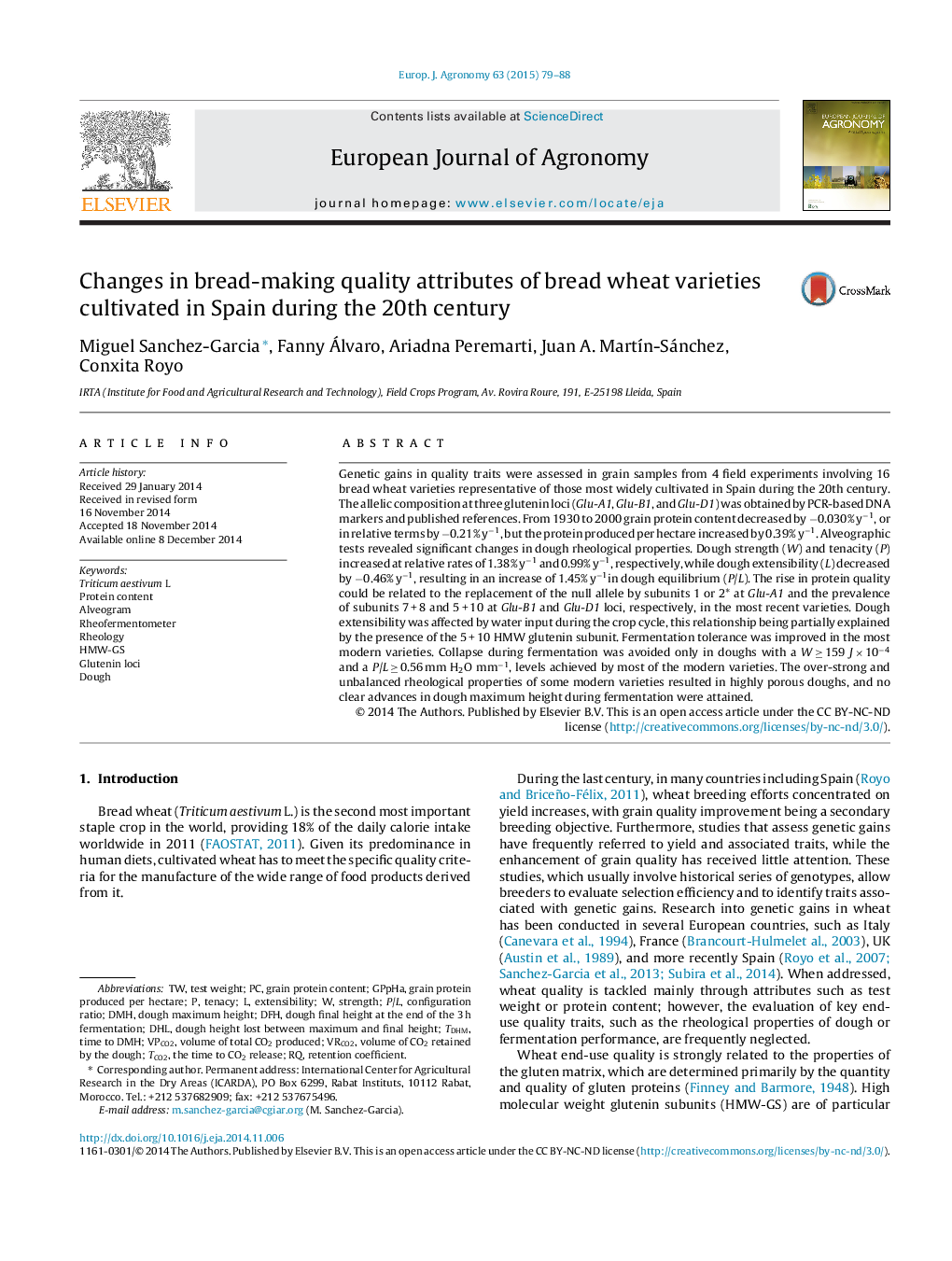| Article ID | Journal | Published Year | Pages | File Type |
|---|---|---|---|---|
| 6374291 | European Journal of Agronomy | 2015 | 10 Pages |
Abstract
Genetic gains in quality traits were assessed in grain samples from 4 field experiments involving 16 bread wheat varieties representative of those most widely cultivated in Spain during the 20th century. The allelic composition at three glutenin loci (Glu-A1, Glu-B1, and Glu-D1) was obtained by PCR-based DNA markers and published references. From 1930 to 2000 grain protein content decreased by â0.030% yâ1, or in relative terms by â0.21% yâ1, but the protein produced per hectare increased by 0.39% yâ1. Alveographic tests revealed significant changes in dough rheological properties. Dough strength (W) and tenacity (P) increased at relative rates of 1.38% yâ1 and 0.99% yâ1, respectively, while dough extensibility (L) decreased by â0.46% yâ1, resulting in an increase of 1.45% yâ1in dough equilibrium (P/L). The rise in protein quality could be related to the replacement of the null allele by subunits 1 or 2* at Glu-A1 and the prevalence of subunits 7 + 8 and 5 + 10 at Glu-B1 and Glu-D1 loci, respectively, in the most recent varieties. Dough extensibility was affected by water input during the crop cycle, this relationship being partially explained by the presence of the 5 + 10 HMW glutenin subunit. Fermentation tolerance was improved in the most modern varieties. Collapse during fermentation was avoided only in doughs with a W â¥Â 159 J Ã 10â4 and a P/L â¥Â 0.56 mm H2O mmâ1, levels achieved by most of the modern varieties. The over-strong and unbalanced rheological properties of some modern varieties resulted in highly porous doughs, and no clear advances in dough maximum height during fermentation were attained.
Keywords
Related Topics
Life Sciences
Agricultural and Biological Sciences
Agronomy and Crop Science
Authors
Miguel Sanchez-Garcia, Fanny Álvaro, Ariadna Peremarti, Juan A. MartÃn-Sánchez, Conxita Royo,
